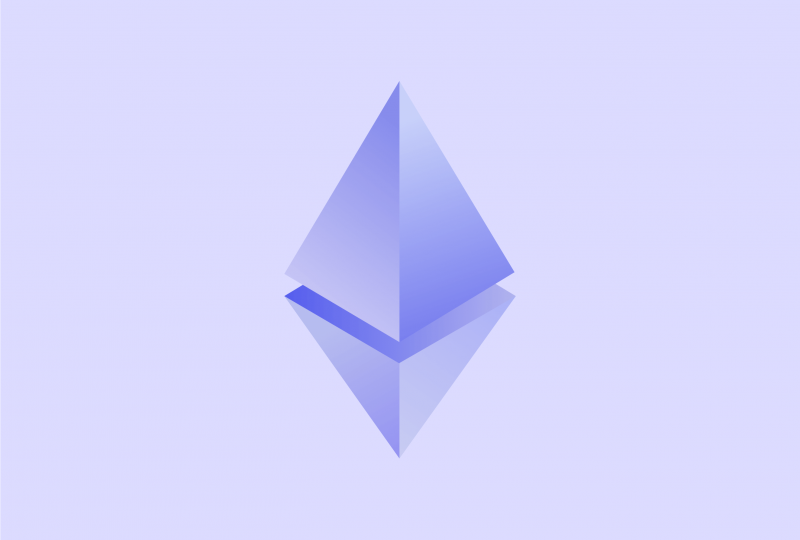What is the Ethereum Merge, And How Will it Change Ethereum?
Oct 10, 2022

The "Merge" of Ethereum, which supporters claim will improve the asset's value in the long term and substantially change the future of cryptocurrency, was a largely anticipated and historic moment in the crypto world.
Ethereum blockchain shifted from the traditional proof-of-work (PoW) mechanism to the proof-of-stake (PoS). This event took place on the 15th of September, 2022. The latest edition of Ethereum, Ethereum 2.0, was born as a result. As an outcome, Ethereum's energy use will be reduced by more than 99%, boosting the Ethereum ecosystem to extend even further.
In this article, you will find out what Ethereum and the Merge are all about, how the Merge is supposed to change Ethereum for the better, what are the potential risks of the Merge, and what the future hold for Ethereum in light of this significant development.
Before we start, let's take a closer look at what Ethereum (ETH) represents.
What is Ethereum?

Ethereum is a blockchain-based decentralized universal software platform. Most people are familiar with it because of its native cryptocurrency, Ether (ETH), the second biggest cryptocurrency after Bitcoin.
Ethereum was designed by a professional team of highly-qualified developers who created the network for people willing to create unique and secure digital projects. Nowadays, people mostly use it for token creation to compensate users for accomplished work in favor of the blockchain. Once the processes are approved, users may also use these tokens to purchase products and services online.
When you ask someone within the crypto industry about Ethereum, people will describe it as a scalable, programmable, highly secure, and decentralized solution. Indeed, those are all the main features of Ethereum. Also, it is known as the blockchain of preference for programmers and businesses building technologies atop it to enhance a number of industries that people use in their daily lives.
What is also important to know is that smart contracts are a vital component of decentralized apps, natively supported programs on Ethereum. Ethereum blockchain is widely used as a foundation for decentralized finance (DeFi) and many applications, where each project uses its unique parameters and features.
Remarkable that a single copy of the Ethereum blockchain is spread across the network, and every user can download it on their device.
The blockchain cannot be altered unless the network as a whole agrees to do so. Therefore, the security of the whole network is robust and is considered one of the most reliable digital networks in the world.
There are several mining methods, and Proof of Work (PoW) is the main one. However, in contrast to proof-of-work, proof-of-stake doesn't demand power-hungry computer processes to approve transactions. It employs sophisticated protocols to create the consensus mechanism, which keeps track of consensus and establishes the conditions under which validators are rewarded for their efforts or are punished for cheating.
This was the reason, among others, why the Ethereum project decided to "merge."
Now let's take a look at what the Merge is.
With the long-awaited transition, the whole blockchain has been switched to new proof-of-stake (PoS) validator nodes, which cost 32 ETH to participate in. Investors' access to ether tokens won't change at all, and Ethereum-based apps will continue to run as usual.
Since its creation, Ethereum has been protected by a proof-of-work consensus mechanism that demands computational power to solve challenging mathematical problems in a competitive contest to find the next block in the blockchain. Now, thanks to the switch to PoS, mining nodes are no longer necessary to compete for block rewards; instead, users put their 32 ETH as so-called collateral to become system validators and receive rewards afterward.
Another reason the Merge took place is that it will require less amount of Ether, which will be issued as block rewards. Before the Merge, more than 10,000 ETH were mined every day. This amount will decrease to around 1,600 ETH each day after the merging. As a result, the inflationary rise of Ether is expected to slow by more than 80%.
Regarding staking the Ethereum Merge, note that all node validators will have to lock up that collateral to be eligible for block rewards. This ETH will be "locked up" until a network update makes payments possible.
Anyone who wants to stake Ether but does not have 32 ETH, which is typically the case given the high price of ETH, may now do so by joining a so-called staking pool. To stake the required 32 ETH for an Ethereum validating node, a stake pool aggregates the deposits among many people. The staking pool then receives a percentage of the block payments from that node based on the amount of ETH that users initially invested. This variation is also available on cryptocurrency exchanges, where users may stake smaller sums in exchange for a predetermined compensation.
How Will The Merge Improve Ethereum?

A) Updated Ethereum will have the capacity to bring more users
Numerous Ethereum network users will benefit from the Merge since more of them will have the chance to reap rewards for contributing to and maintaining the network. Operations on the system will no longer be verified by "privileged" miners as PoS replaces PoW. However, following the Merge, operations will be handled through staking, wherein Ethereum users can "stake" a percentage of existing Ethereum assets in exchange for a share of the transaction fees to validate transactions and secure the network.
Even though PoW mining requires substantial initial contributions, many investors will find it expensive to maintain their own node for handling transactions, which requires at least those 32 ETH mentioned above.
The best part is that several respected firms allow users who don't possess the 32 ETH to take advantage of these bonuses by making staking a comparatively easy and systematic procedure. Staking Ethereum at the moment yields 3.25% APY on Coinbase and 3.8% APY on Lido Finance.
The potential to generate additional income relatively smoothly is another appealing incentive to hold Ethereum. These interest rates are substantially greater than those of many dividend companies and far higher than the market average for the S&P 500 or other indexes.
B) The Merge makes sharding achievable
Two significant developments must occur before Ethereum can achieve its full potential. First, it must improve processing throughput and, second, decrease costs, also known as gas fees. Although it won't immediately solve these issues, the Merge is a crucial first step because it will provide the groundwork for Ethereum to ultimately enlarge its capability, making it quicker and less expensive. Sharding, a method for doing this, is expected to be used widely.
That said, the blockchain will be broken down into smaller, easier-to-manage blockchains through sharding. Participating nodes will become more effective since they won't have to confirm every trade on the core blockchain; instead, they'll be capable of focusing their resources solely on those that take place on their shard.
Sharding will also decrease obstacles associated with becoming a validator. It will reduce the amount of data that has to be stored since validators will only need to store a portion of the blockchain's data.
According to the Ethereum developing team, the release of sharding is anticipated in 2023. It all depends on how well things go after the Merge. Sharding will enable Ethereum to move closer to achieving its prime goal of becoming strong enough to benefit all users once it is deployed.
C) The second-largest cryptocurrency just went "green"
Ethereum's energy consumption has been one of the most criticized parts. Now, with the Merge, that aspect has received the most attention. Ethereum has utilized a PoW consensus process similar to Bitcoin until now. Huge amounts of processing power are required to verify new transactions on the blockchain to solve challenging mathematical problems. PoW is known for being costly, energy-intensive, and slow. The Bitcoin network is frequently criticized for consuming more energy than small to middle countries.
As already mentioned, the PoS method would result in a staggering decrease in energy consumption. The network will no longer require powerful, costly machines to function, reducing the demand for dedicated equipment and electricity pollution. Many point out that this is the most significant achievement, particularly in the era when fighting climate change is among the top priorities.
Since Ethereum will become a sustainable and "green" financial asset people can invest in, those who value businesses that are concerned with the environment, social, and governance policies may become more inclined to invest in Ethereum. Thus, ETH can go beyond the crypto industry and show its true potential.
Indeed, the Merge has its benefits, and many people talk about it actively. However, every coin has two sides, and this historical update is no exception.
Risks of the Ethereum Merge
A) Scams could appear all over the place
There has been uncertainty regarding whether there would be a freshly minted coin called ETH 2 or something similar that might confuse potential buyers. This exposes ETH holders to fraud because many crypto apps have been alluding to the combined and enhanced network as "ETH 2." In order to steal customers' ETH, cybercriminals may attempt to exploit this misunderstanding by convincing users to exchange their existing ETH for "ETH 2" or something similar to that. It is highly recommended always to double-check where you put your funds.
B) Risks of Denial-of-Service (DoS) attacks
Since network proposers will be known in advance thanks to the switch to PoS, they will be more susceptible to DoS attacks. For example, if a hostile actor is ready to submit one of the following blocks to the blockchain, they may initiate a DoS against the existing proposer's node in order to compel them to forfeit their position and then seize control of the operations in that zone. Although methods are being developed to ensure the proposer's decision is private, the danger remains.
C) Centralization of staked ETH
Staking pools have grown in popularity; although most investors lack the requisite 32 ETH to stake but may join a community of others to obtain the amounts necessary to qualify as a verifier. This might result in a concentration of validator nodes under the control of centralized institutions, introducing the possibility of restriction or governance control.
The Ethereum project presented the switch from proof-of-work to proof-of-stake as a strategy to combat the centralization network by making it more challenging for different firms to interfere in the Ethereum ledger. However, early indications of network consolidation have spurred worries that such expectations would not be realized. It looks like that is exactly the case. As expressed by a representative of the Ethereum infrastructure in a tweet, "Out of the previous 1,000 blocks, only Lido and Coinbase have constructed 420 of them."
That said, ETH has migrated to services provided by firms such as Coinbase and other staking pools that enable users to become validators and earn rewards for doing so with minimum effort.
Issues have been raised due to so much cash flowing to these services: if a single entity owns more than half of the network's staked Ether, it can be challenging for others to complete transactions to Ethereum's ledger.
What might be expected from Ethereum in the future?
Ethereum proved to be the first blockchain to employ smart contracts. However, there are already numerous Ethereum alternatives with similar attributes. They are entering the market and affecting the interest for ETH in both positive and negative ways.
Here are a few factors that will influence the value and usability of Ethereum in the future:
A) It all depends on the usage of the network
Smart contracts and NFTs, which allowed users to mint and then sell digital artwork, turned out to be very popular. The blockchain's popularity caused what some refer to as a "chokepoint" on the network.
Moreover, the more users, the worse for Ethereum because transactions are becoming more expensive. In reaction, the Ethereum team has built additional infrastructure enhancements, although it has taken several years to develop new technologies.
There are other blockchain networks, known as layers, that have been created, shifting users away from the Ethereum blockchain and creating new competitors — which may boost their attractiveness. If investors discover that another network may be more beneficial for them, competition may take customers away, thus undermining Ethereum's long-term value.
B) 'ETH-Killers' pose a real threat
As mentioned above, Ethereum is not the only "player" in the industry. Say if the concept of cryptocurrencies, NFTs, and Web3 will gain popularity, users will be more diversified across the whole realm of blockchains. As of today, projects like Solana, Cardano, or Avalanche are trying to build the infrastructure that will support the future vision of Web3 and, therefore, are the main rivals of Ethereum. Investors will definitely compare these innovations and pick the most suitable solution.
Moreover, many predict that the next several years will be a contest for Web3, which is considered to be the next evolution of the internet and appears to be unavoidable.
Conclusion
Even with the competition, the bear market of 2022, and other challenges Ethereum is facing, there is a general feeling of hope that the original smart contract blockchain will survive this testing period.
It is vital to remember that Ethereum currently controls over 90% of the whole NFT market, and the question is if it can hold this position. It looks like it is going to be a decisive period for Ethereum.
Moreover, there is minimal reason to believe that Ethereum (together with the whole crypto market) will quickly recover from its present bear market.
Many experts also believe that Ethereum has the "community momentum" that allows people to develop innovation and identify new opportunities.
That being said, it is difficult to predict the future of Ethereum, but the Merge has shown the dedication of the team behind the project, which also boosted people's confidence in the project long-term.




